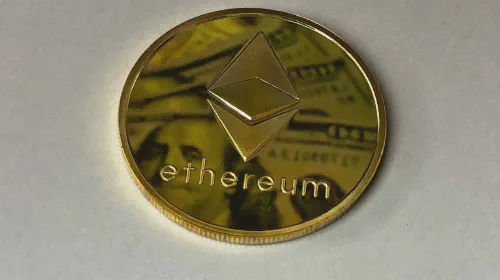Ethereum vs. Solana - What's the Difference?
Salomon Kisters
Sep 19, 2022This post may contain affiliate links. If you use these links to buy something we may earn a commission. Thanks!
Though the cryptocurrency space has been around for barely over a decade and is still in its early stages, it’s growing exponentially. About 13 years ago, this industry started with the launch of the first decentralized blockchain ledger, Bitcoin. Now, we see dozens of new blockchain-based projects launching every week.
Right now, the cryptocurrency industry is populated by over 12,000 different crypto tokens developed on almost 1,000 blockchain platforms.
With so many options, crypto users and investors often get confused about which project to trust. This confusion is more common in the case of smart contracts-compatible blockchain projects, such as Ethereum and Solana, as they all are trying to solve the same problems.
This article will compare different aspects of Ethereum and Solana to highlight the differences and similarities between both projects.
What is Ethereum?
Ethereum was conceived by a Canadian programmer, Vitalik Buterin. The project officially started in November 2013, when Buterin described Ethereum for the first time in a whitepaper. Vitalik Buterin got involved in the cryptocurrency industry at the young age of 17. He co-founded Bitcoin Magazine in 2012, regarded as the first serious publication dedicated to blockchains and cryptocurrencies.
Till the early 2010s, blockchains were primarily concerned with creating a decentralized financial structure that could run without central entities, such as banks. Vitalik Buterin believed that blockchains are capable of much more than being simple decentralized financial platforms for peer-to-peer transactions.
He wanted a blockchain that was a decentralized financial network and a software development platform all in one. Buterin first suggested a scripting language for application development on Bitcoin. After failing to get his proposition approved, he decided to go with the idea of a new blockchain with a scripting language, i.e., Ethereum.
Ethereum was announced in January 2014 at the North American Bitcoin Conference. Buterin’s efforts to develop Ethereum were joined by Charles Hoskinson, Gavin Wood, Anthony Di Iorio, Mihai Alisie, Amir Chetrit, and Joseph Lubin. The software development was initially started through a Swiss company named Ethereum Switzerland GmbH. However, a Swiss non-profit organization, the Ethereum Foundation, was eventually founded, which took over the project’s development.
The project was crowdfunded through an ICO held in August 2014. Investors could buy Ether tokens in exchange for Bitcoin tokens during the sale. The team managed to sell around 7 million Ether during the first 12 hours. A total of 50 million Ether were sold throughout the ICO at the price of $0.32 tokens per sale, raising a capital of $16 million for the development of Ethereum.
The Ethereum blockchain was officially launched on 30 July 2015. This blockchain had two basic functions: facilitate P2P transactions through mining and run smart contracts. The integration of smart contracts allowed programmers to develop decentralized applications using the Ethereum network. Since its launch, the blockchain has gone through multiple fundamental upgrades and hard forks.
What is Solana?
Solana was founded by Anatoly Yakavenko – a Russian computer scientist. It officially came into being when he wrote the Solana Whitepaper in 2017. Before inventing Solana, Yakavenko had previously worked at Qualcomm for 13 years. He played a significant role in developing distributed systems at Mesosphere and Dropbox. Two former colleagues of Yakovenko at Qualcomm and Dropbox, Eric Williams and Greg Fitzgerald, also joined him in the development of the Solana blockchain.
Solana was made to solve the scalability problem in the blockchain industry. Prior to Solana, most of the popular blockchains struggled with processing a large number of transactions in a short time period. For example, Bitcoin – the most popular and widely adopted blockchain – can only process seven transactions per second. Even the second generation blockchain, Ethereum, can validate only up to 30 transactions during this period.
Compare this with centralized financial platforms, such as Visa, which can process up to 24,000 transactions every second. In order to be as efficient as a centralized financial system, cryptocurrencies need to become as robust as these payment services.
Yakavenko believed that using an “internal clock” in the blockchain mechanisms could solve the scalability problem. This would massively reduce the time required to process transactions without compromising on the decentralization feature of the network. He used a hybrid consensus model which combined Proof-of-Stake and Proof of History for the Solana blockchain.
Solana’s development is coordinated by a Switzerland-based non-profit called Solana Foundation. The underlying software technology for the Solana project was developed by a US-based software company named Solana Labs. The project raised around $25 million through various ICOs during 2017-2020. In 2021, it again raised almost $340 million through various crypto capital ventures.
Though the project is still in beta, the Solana mainnet was launched to the public in March 2020. Solana is also a smart contracts-compatible blockchain, which means programmers can develop applications on its blockchain. It is one of the reasons the project is often regarded as an Ethereum competitor.
The Consensus Model of Ethereum
Currently, the Ethereum blockchain follows the same consensus model as Bitcoin, i.e., Proof-of-Work. In a PoW mechanism, transactions are recorded on the block and added to the blockchain ledger by miners.
Miners are network nodes that compete against each other by solving complex mathematical problems. To solve these problems, they are required to use highly-powerful computational devices and a significant amount of electricity.
The first miner to solve the problem is rewarded with the opportunity to write the block. The miner then processes the transactions made on the Ethereum blockchain and records them on the block. After a block is completed, it is sent to the validator nodes on the network to verify if the transactions are correct. After verification, the block is added to the blockchain, and the miner is rewarded with newly minted ETH tokens.
There are several problems with this consensus model, the first one being that the time required to solve the complex mathematical puzzle keeps the network from becoming robust and quickly processing transactions.
This leads to another problem: during high traffic hours, users have to incentivize miners by paying very high fees to process their transactions first. Moreover, the use of highly powerful computers and massive amounts of electricity is damaging to the environment.
As a result, the Ethereum blockchain is moving to the Proof-of-Stake consensus model. It will replace the miners with stakers. To process transactions, network participants will have to lock a certain amount of ETH tokens on the blockchain. The shift from PoW to PoS will not only make Ethereum more sustainable but will also improve its scalability and transaction fee issues significantly.
The Consensus Model of Solana
As mentioned before, the Solana blockchain uses a combination of Proof-of-Stake and Proof of History to process transactions. Technically speaking, PoH is not a consensus mechanism but a cryptographic clock.
In the PoH model, network nodes don’t have to communicate and share a large amount of data with each other to determine if a transaction is valid or not. Instead, they simply time-stamp each transaction and consider the chronologically stored historical records on the blockchain.
Each node has its own clock, which removes the need to communicate and makes the network supper-efficient. Using the historical data and cryptographic clocks, nodes can easily agree on the chronological order of the new transactions and events occurring on the blockchain.
The nodes that time-stamp the new transactions on the blockchain are called validator nodes. Currently, there are around 1,000 validator nodes on the network. However, it must be noted that the transactions are distributed only to a small group of 150 nodes called Solona Clusters. Anyone can become a validator by staking SOL tokens on the Solana blockchain.
Apart from the PoH model, the Solana blockchain also uses several other protocols that help Solana achieve incredibly high transaction processing speed. These protocols are:
- Tower Byzantine fault tolerance
- Turbine
- Pipelining
- Cloudbreak
- Sealevel
- Gulf Stream
- Achievers
The Tokenomics of Ethereum
The native crypto token of the Ethereum ecosystem is called Ether or ETH. Ether is used by network users in order to pay transaction fees. Moreover, the token is also required in order to participate in the governance of the ecosystem.
Unlike Bitcoin, whose total supply is fixed at 21 million tokens, there is no limit to the amount of ETH that can be mined. However, the blockchain has a burning mechanism that will eventually make the cryptocurrency deflationary. The current total supply of ETH is around 122 million tokens, with the second largest market cap in the industry.
The Ethereum Foundation sold around 60 million ETH of the initial 72 million ETH to the public. This makes up 80% of the initial supply. The remaining 12 million ETH, or 20% of the initial supply, was allocated to the Ethereum Foundation.
The Tokenomics of Solana
The native crypto token for the Solana network is called SOL. SOL is used to pay transaction fees. Soon the token will also be used for governance purposes.
Like Ethereum, Solana does not have a fixed market supply. The current unfixed total supply of SOL is around 511,616,946, while the total circulating supply is over 349 million SOL. Originally, the inflation rate was set to start at 8%.
However, eventually, it will be reduced to just 1.5% in the next 15 years. 50% of all the transaction fees paid by users on the Solana network are burned. This factor can potentially lead the cryptocurrency to a deflationary path.
As far as token distribution is concerned, 25% of the initial token supply is held by Solana Labs. About 38% was allocated to the community treasury, managed by the Solana Foundation. Around 35% was given to the early investors. Just 2% of the total supply was made available for retail investors.
Is Solana the Ethereum-Killer?
Solana is dubbed “the Ethereum killer” and “the next Ethereum” by many crypto-enthusiasts. But is there really any truth to these titles? Is Solana actually better than Ethereum?
Even though Solana’s transaction speed of 65,000 tps is much faster than Ethereum’s 30 tps, there are several concerns regarding the project.
The Solana blockchain is infamous for recurring power outages. Moreover, the blockchain has been attacked several times by hackers ever since its launch in 2020. On top of that, the project has faced criticism due to centralization concerns.
Ethereum may be a slow and costly platform to use, but after some upcoming fundamental updates, these problems are expected to improve significantly.
The blockchain will become much more scalable, increasing the processing speed to several thousand transactions per second. This will consequently reduce the gas fees as well.
Ethereum currently has over $200 billion market capitalization, almost 18 times more than Solana’s $11.5 billion. This represents a much larger institutional and retail interest in Ethereum compared to Solana. Moreover, Ethereum’s beacon chain (the foundation of its upcoming Proof of Stake network) has over 400,000 validator nodes, making it much more decentralized than its competitor.
Conclusion
At the end of the day, the answer to which blockchain is better depends on your usage. If you simply want a fast platform, Solana is a better option. However, if you are looking for a project that’s already well-established as well as has huge potential in the future, it’s hard to beat Ethereum.
Stay informed with the latest insights in Crypto, Blockchain, and Cyber-Security! Subscribe to our newsletter now to receive exclusive updates, expert analyses, and current developments directly to your inbox. Don't miss the opportunity to expand your knowledge and stay up-to-date.
Love what you're reading? Subscribe for top stories in Crypto, Blockchain, and Cyber-Security. Stay informed with exclusive updates.
Please note that the Content may have been generated with the Help of AI. The editorial content of OriginStamp AG does not constitute a recommendation for investment or purchase advice. In principle, an investment can also lead to a total loss. Therefore, please seek advice before making an investment decision.

7 Reasons Why Ethereum Is Different From Bitcoin
In this article, we’ll look at the differences between Ethereum and Bitcoin and see where Ethereum improved upon its blockchain technology by learning from its predecessor.

Are Nfts Bad for the Environment?
Energy consumption is the main issue that people have with cryptocurrencies and NFTs. But how bad are NFTs for the environment after all?

Are Nfts Good or Bad for Artists and Musicians?
NFTs have generated much hype over the last couple of years. But are they good or bad for artists and musicians?
Protect your documents
Your gateway to unforgeable data. Imprint the authenticity of your information with our blockchain timestamp